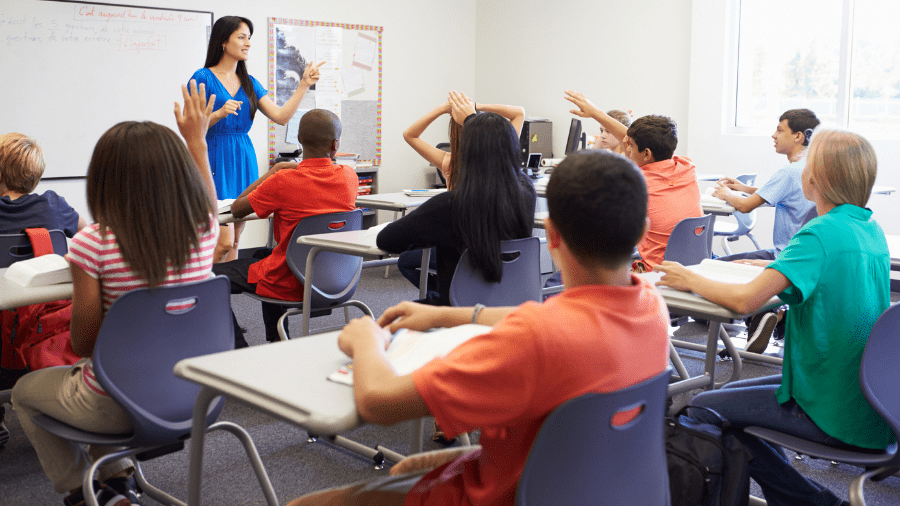In a conversation with Lisa Gooddell, M.A., founder and host of the Help for Special Educators podcast, Dr. Rachel Schwartz, BCBA-D, a Watson Educational Consultant, answers educators’ questions about teaching sexual education to students with special needs.
Teaching children about sexual education can be daunting. Sexual education encompasses so many topics including puberty, privacy, body parts, self-awareness, social skills, personal safety, as well as the mechanics of sex. As an educator or a parent, you may be looking for resources or guidance on how and when to start approaching this topic.
As with any set of skills you are teaching to a child, start early and incorporate the topics into your day-to-day routines. Conversations about sexual education should start early; don’t wait for puberty! As your child or student matures, so too can the complexity and scope of the topics you discuss.
Think of it this way: you wouldn’t hand a toddler a book and expect them to be able to read it immediately. Similarly, we shouldn’t expect a child to internalize and comprehend every aspect of sexual education without reinforcement and consistent coaching. Start building the foundation for sexual education and build onto that basic knowledge over time.
Questions from Educators about Sexual Education
In a conversation with Lisa Gooddell, M.A., host of the Help for Special Educators podcast, we addressed a few questions and scenarios that educators submitted about their experiences with teaching sexual education and handling questions about sexuality that have come up in their classrooms.
Question: How should educators handle sexual education discussions around a student whose parents do not want them involved in any lessons or conversations about this topic?
Answer: This can be a really scary topic for a lot of parents and they may feel nervous thinking about their child getting older and becoming a sexual being. As an educator, try approaching the parent from a place of empathy. Acknowledge their feelings about this subject, recognizing that it can be scary for them.
Communicate to the parents that this information is incredibly important for their child and at some point, they will discover it. You may want to ask the parent if they would rather their child learn accurate, appropriate information from a trusted source (i.e. a parent or trusted educator) or from a television show, or internet resource that may not be accurate.
Keep the focus on the child’s safety. Unfortunately, individuals with disabilities are at the greatest risk for sexual assault in the United States1. Appropriate sexual education can prepare them to advocate for their own safety by understanding who they can allow to touch their body, what is appropriate contact and what is not. Explain that sexuality education encompasses more than just the mechanics of sex, it includes privacy, the understanding of their body parts, consent, and self-advocacy.
Reinforcing the Concept of Privacy
Question: What is the appropriate response if a student exposes their genitals to other students?
Answer: The conversation with the student following this act should focus not on punitive measures or assigning shame, but rather around privacy and what behaviors are appropriate in a public setting vs. when the student is alone in a private setting.
This is also a great opportunity to collaborate with the student’s family to reinforce the concept of privacy and context. Presenting consistent information to the student at home and in school will help to reinforce these ideas.
For the topic of privacy, point out to your student or child the contextual elements that make a space private, i.e. “Are there people around you? Are there open doors or windows through which you can be seen by others? That means it is a public space.”
Start teaching and reinforcing these concepts at every level of learning: elementary, middle, and high school. Setting these expectations and helping students understand the reasoning behind them can prevent misunderstandings about appropriate vs. inappropriate behaviors.
Body Autonomy and the Use of Physical Prompts
Question: How do you balance respecting a student’s body autonomy while also ensuring they are receiving the appropriate support from educators?
Answer: In a previous article, I go into depth about body autonomy: what it is, why it’s important, and how educators can encourage students to advocate for their own autonomy.
It is difficult to balance the need to provide physical prompting and support while also building a student’s autonomy over their body. Establishing a trusting relationship with your student is the key element to maintaining this balance.
Physical prompts are often necessary and that’s ok! They are not a bad thing. Just keep in mind that physical prompts should be completed with the student, not to the student. The student needs to be part of the process. The caveat to this is in matters concerning safety. When the student is in an unsafe situation, physical prompting may be necessary, i.e. if a student runs out into the middle of a road.
Listen to the Help for Special Educators podcast to hear more of Dr. Schwartz and podcast found and host, Lisa Gooddell’s in-depth discussion about sexuality education for individuals with special needs.
Dr. Rachel Schwartz, BCBA-D is an Educational Consultant at the Watson Institute. She received her Master’s Degree in Teaching and Applied Behavior Analysis from the University of Georgia and her Ph.D. in Special Education from the University of Pittsburgh. Dr. Schwartz has worked internationally creating supervising programs for individuals with developmental disabilities and conducts research on the importance of sexual education and expression for individuals with intellectual and developmental disabilities.
1 Shapiro, J. (2018, January 09). For Some With Intellectual Disabilities, Ending Abuse Starts With Sex Ed. Retrieved August 06, 2020, from NPR.
